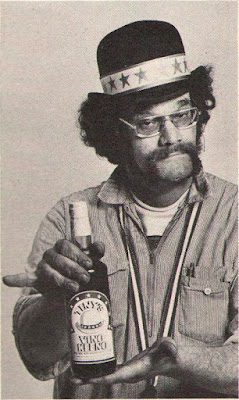Menya Musashi Kodo 麺屋武蔵 虎洞
 This kodo (tiger's cave) is a fashionable, yet funky little ramenya a couple minutes from the Kichijoji station. As part of Takeshi Yamada's mini-empire, this great little place looks like an old-fashioned eatery, creating some very authentic and tasty traditional style ramen, along with creative seasonal variations.
This kodo (tiger's cave) is a fashionable, yet funky little ramenya a couple minutes from the Kichijoji station. As part of Takeshi Yamada's mini-empire, this great little place looks like an old-fashioned eatery, creating some very authentic and tasty traditional style ramen, along with creative seasonal variations.Ramen, for some reason gets a bad rap. It could be the 1958 invention by Momofuku Ando, Top Ramen, that gives it the pentimento of poverty, rubism, and bad memories of undergraduate life. It could be some simple jingoism -whether from the gaijin viewpoint of Japanese culinary hegemony or the Japanese viewpoint of ramen's roots in Chinese culture. Many Japanese feel that ramen is not quite as Japanese as udon or soba. But like almost all food in Japan, it did come from elsewhere. And like many a culinary wonder in Japan, what becomes of this simple dish of noodles can be amazing.

Granted, there are a zillion ramen joints throughout Tokyo that leave much to be desired. Ah, but when you come upon a good one, mark it on the map. And when you come upon a great one, make it part of your life.
Case in point is the ramen from Menya Musashi Kodo. Today's choice was a simple, yet classic, variation - an aji tama shio ramen. And let's make that karai (味玉辛ら〜麺). That's a luscious bowl of perfectly cooked fresh ramen noodles with menya (salted, then reconstituted bamboo shoots, cha shu, a few shreds of Japanese leek, a couple of squares of nori, an egg perfectly cooked in shoyu and who-knows-what, all swimming in a rich broth red with hot spice. There's nothing quite like it after a grueling walk through the food department at Lon Lon, listening to incessant Christmas music. It makes it all worth it.

Let's talk about the ramen itself - the noodles. They are made from wheat, salt, water, and the special ingredient - kansui. Kansui is an alkaline mineral water, containing sodium carbonate, potassium carbonate, and sometimes a small amount of phosphoric acid. Kansui was named after the water from Inner Mongolia's Lake Kan which contained large amounts of these minerals and was said to be perfect for making these noodles. Making noodles with kansui give them a distinctive yellowish hue and a firm texture that holds up to rapid boiling. The ramen at Menya Musashi are about as perfect as a noodle can be. Toothsome, staying firm until the last drop of broth is slurped, they are the definition of ramen.

The cha shu, cut thin, is supremely flavorful. A little goes a long way. The eggs are a thing of true beauty. The soy-colored outer albumen gives way to a pearly whiteness. At the center the yolk is firm along the outer edge of the sphere, giving way to a perfectly liquid, gooey center. How do the Japanese cook eggs this way? The veggies and the nori, perfect in proportion and accent.
And the broth itself - amazing. Just karai enough to bring up a nice little sweat, nicely garlicky, hot, and rich.
NV


Comments